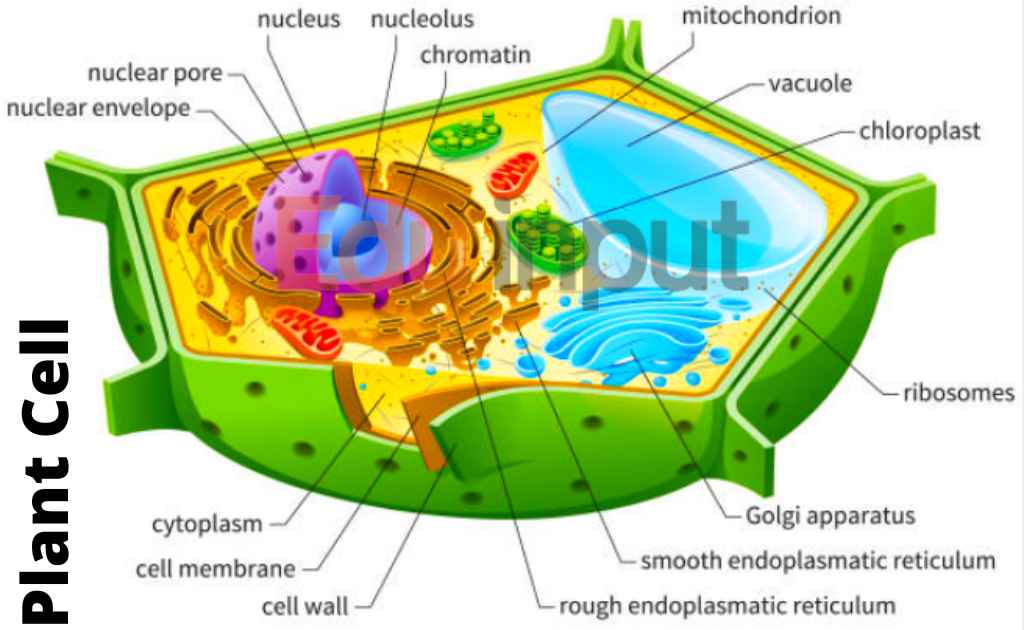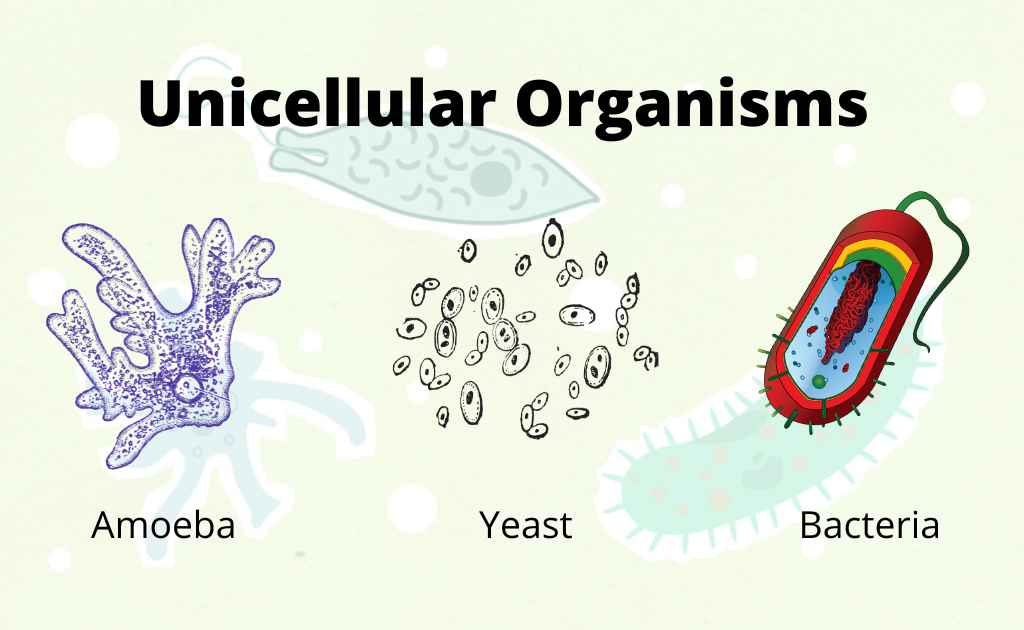Nucleus- Definition, Structure and Functions Of Nucleus
Nucleus Definition
The cell nucleus is a membrane-bound organelle in eukaryotic cells. Eukaryotic cells possess a true nucleus, as opposed to prokaryotic cells like bacteria and blue-green algae, which lack a defined nucleus. The nucleus is the control center of the cell and contains the genetic material in the form of chromosomes. These chromosomes are thread-like structures composed of DNA and associated proteins.

Evolution of Nucleus
Four hypotheses have been proposed to explain the existence of the nucleus.
- The first model is known as the “syntrophic model”. It is hypothesized that the symbiosis originated when ancient archaea, invaded and lived within bacteria similar to modern myxobacteria, eventually forming the early nucleus.
Which are thought to have developed from a similar endosymbiotic relationship between proto-eukaryotes and aerobic bacteria. The archaeal origin of the nucleus is supported by observations that archaea and eukarya have similar genes for certain proteins, including histones.
Observations that myxobacteria are motile, can form multicellular complexes, and possess kinases and proteins similar to eukarya, support a bacterial origin for the eukaryotic cell.
- The second model is based on the existence of modern planctomycetes bacteria that possess a nuclear structure with primitive pores and other compartmentalized membrane structures.
- The most controversial model, known as viral eukaryogenesis, posits that the membrane-bound nucleus originated from the infection of a prokaryote by a virus.
- The exo-membrane hypothesis is the most recent model, it suggests that the nucleus originated from a single ancestral cell that evolved a second exterior cell membrane.
Shape and Appearance of Nucleus
The nucleus is normally around 5-10 μm in diameter in multicellular organisms. It is the largest organelle in the cell which acts as the brain of the cell that controls all the activities happening inside the cell. The smallest nuclei are approximately 1 μm in diameter and are found in yeast cells.
Structure Of Nucleus
The nucleus is composed of various structures:
1. Nucleoplasm
The nucleoplasm is the semi-solid material that fills the interior space of the nucleus. It is surrounded by the nuclear envelope and contains the following key components:
- Chromatin – This is the complex of DNA and proteins called histones. In non-dividing cells, the chromatin appears as an unwound, threadlike mass. During cell division, the chromatin condenses to form the visible chromosomes.
- Nucleolus – This is a dense region within the nucleus where ribosomal RNA (rRNA) is transcribed and assembled with proteins to form the ribosomal subunits. The nucleolus is also the site of ribosome assembly before they are exported to the cytoplasm.
- Nuclear matrix – This is a network of protein fibers that provides structural support and organization within the nucleus. The nuclear matrix anchors the chromatin fibers and other nuclear components.
- Nuclear bodies – These are small, membrane-less structures within the nucleoplasm that are involved in various nuclear processes, such as gene regulation, RNA processing, and telomere maintenance.
The nucleoplasm also contains various enzymes, transcription factors, and other proteins necessary for processes like DNA replication, transcription, and RNA processing. The nucleoplasm’s fluid nature allows for the diffusion and movement of these molecules within the nucleus.
2. Nuclear Envelop
The nuclear envelope is a double-membrane structure that encloses the nucleus and separates the nuclear contents from the cytoplasm. This envelope is continuous with the endoplasmic reticulum membrane at several points. The two membranes that make up the nuclear envelope are separated by a space of about 20 to 40 nanometers.
Closely associated with the inner membrane is a layer of proteins that helps maintain the shape of the nucleus and the organization of the genetic material inside. The nuclear envelope is perforated by nuclear pores with a diameter of around 100 nanometers.
These pores form large protein complexes that regulate the movement of macromolecules and particles between the nucleus and cytoplasm. While the pores allow RNA molecules to exit the nucleus, they prevent DNA from leaving. This selective permeability gives the nucleus direct contact with the endoplasmic reticulum while maintaining the separation of the nuclear material from the rest of the cell.

3. Nuclear pores
the outer and inner membranes are discontinuing at certain points. So they form pores, called nuclear pores.
The nuclear pores allow the exchange of material between the nucleus and cytoplasm. The number of pores is different in different cells. The undifferentiated cells have numerous pores. These may be about 30,000 per nucleus. On the other hand, differentiated (mature) cells like erythrocytes (RBC)) have only 3 to 4 pores per nucleus. Each pore has a definite structure. It controls the movement of substances, passing through it.

4. Chromosomes
chromosomes are an essential part of the nucleus. They are thread-like structures made up of DNA and proteins, and they contain the genetic instructions that an organism needs to develop and function.
The nucleus acts like a cell’s control center, and chromosomes store the genetic information that the nucleus uses to run the cell. Imagine chromosomes as the instruction manuals that tell a cell how to build its various parts and carry out its functions.
5. Nucleolus
The nucleus contains a prominent, dense region called the nucleolus. The nucleolus does not have a membrane boundary. It organizes into three distinct parts named fibrillar center, the dense fibrillar component, and the granular component. The fibrillar center holds the rDNA genes encoding ribosomal RNA (rRNA).
Transcription of these rRNA genes occurs in the fibrillar center. The dense fibrillar component surrounds the fibrillar center and carries out the initial processing of the newly transcribed rRNA. The granular component, forming the outermost region, completes the assembly of the ribosomal subunits by combining rRNA with ribosomal proteins.
The nucleolus manufactures ribosomes, which then export to the cytoplasm for protein synthesis. Cells actively synthesizing proteins have larger and more numerous nucleoli. During cell division, the nucleolus disassembles and then reassembles in the daughter cells afterward.
Functions of Nucleus
The nucleus performs several vital functions within a eukaryotic cell:
- Genome storage – The nucleus houses the cell’s genetic material in the form of chromosomes, which contain DNA. This DNA carries the instructions (genes) for the cell’s structure and functions.
- Gene expression regulation – The nucleus controls gene expression by regulating the processes of transcription (synthesis of RNA from DNA) and RNA processing. Various proteins and regulatory sequences in the nucleus determine which genes are expressed and to what extent.
- Ribosome biogenesis – The nucleolus is the site of ribosome production. Ribosomes are large molecular machines composed of ribosomal RNA (rRNA) and proteins, which are essential for protein synthesis.
- RNA synthesis – The nucleus is the site of transcription, where different types of RNA molecules (mRNA, rRNA, tRNA) are synthesized from DNA templates by enzymes called RNA polymerases.
- Cell division control – The nucleus plays a crucial role in regulating the cell cycle and the process of cell division (mitosis or meiosis) by ensuring proper chromosome duplication and segregation.
- Protein trafficking – The nuclear pores embedded in the nuclear envelope facilitate the selective transport of proteins, RNA molecules, and other macromolecules between the nucleus and the cytoplasm.
- Response to cellular signals – The nucleus receives and responds to various signals from the cell’s environment, allowing it to coordinate cellular activities accordingly.
- Aging and apoptosis regulation – The nucleus is involved in regulating cellular aging processes and programmed cell death (apoptosis) through the expression of specific genes and signaling pathways.
Frequently Asked Questions-FAQs
What is Nucleus?
The nucleus is a membrane-bound organelle, that act as the brain of the cell. It contains the genetic material of the cell.
What are the functions of the Nucleus?
Nucleus stores DNA
Maintains integrity of genetic material
Aids in transcription and translation
What is the structure of Nucleus?
The nucleus consists of;
Nuclear envelope
Nucleolus
Nuclear Pores
Nucleoplasm
Why nucleus is called the brain of the cell?
The nucleus controls all the activities of the cell. It works as a remote control center.

 written by
written by 





Leave a Reply